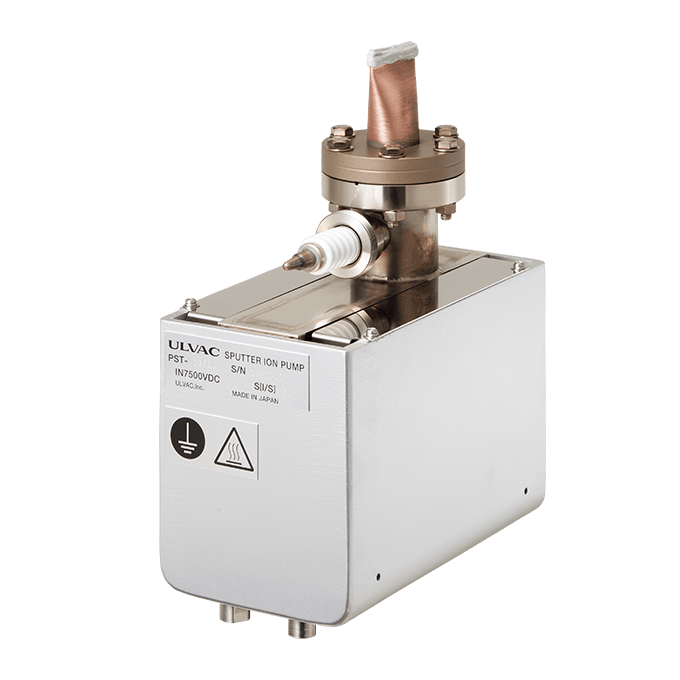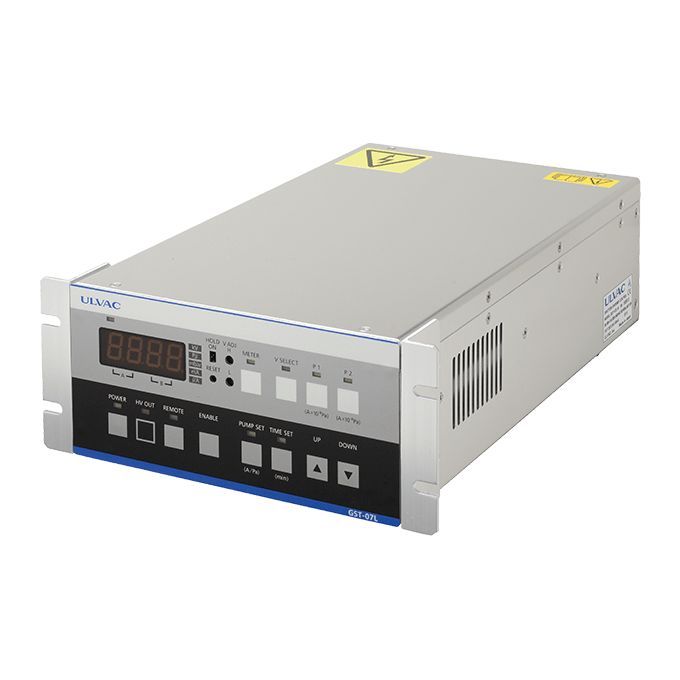Fundamentals of Vacuum Pumps (High Vacuum)
Ion Pump
What is an Ion Pump?
Ion pump works for generating ultra-high or extreme-high vacuum. The structure is simple; an electric field is applied to a cell consisting of an anode and a cathod, so there are neither driving parts nor sounds and vibration. This pump is categorized in accumulating type and exhausts independently without a fore pump.
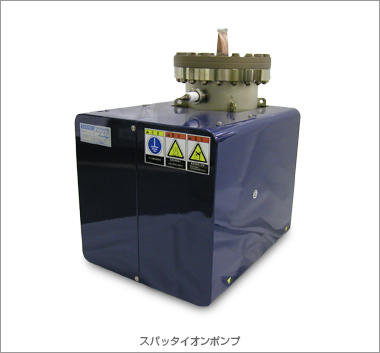
Ion Pump's Applications:
- Accelerators
- Ultra-High or Extreme-High Vacuum Pumping Units
- Analytical Instruments
- Electron Beam Irradiators
Features
This pump doesn't make any noize and vibration in operation due to no mechanical movable parts. This feature is essential for analytical instruments or accelerators.
| Advantage | Disadvantage |
| Peaks ultra-high and extreme-high vacuum. No mechanical noise and vibration. Completely oil-free. |
Difficult to exhaust gas at a high flow rate. Operating range from high vacuum. |
How Ion Pump Works
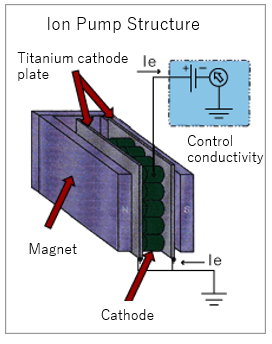
A pump case, a magnet yoke, a cell (pump cell) consisting of an anode and a cathode, and a simple structure apply an electric field to the cell.
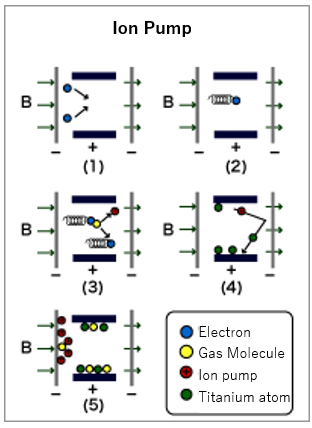
1) Generation of primary electrons●.
2) Spiral orbit of the primary electrons.
3) Generation of secondary electrons and ions ● by the collision of primary electrons and gas molecules●
4) Ions collide with the cathode and eject titanium atoms●.
5) Titanium atoms adsorb active gas molecules, and ions are trapped in the cathode.
Fundamentals of Vacuum Pumps (High Vacuum)
- Screw Pump
- Multi-Stage Roots Vacuum Pump
- Dry Scroll Vacuum Pump
- Dry Diaphragm Vacuum Pump
- Dry Rocking Piston Vacuum Pump
- Dry Rotary Vane Vacuum Pump
- Oil Rotary Vacuum Pump
- Mechanical Booster Pump
- Cryopumps
- Turbomolecular Pump
- Ion Pump
- Titanium Sublimation Pump
- Sorption Pump
- Diffusion Pump
- Ejector Pump
HOW TO
- Vacuum Tech Basics
- Fundamentals of Vacuum Pumps (Low to Medium Vacuum)
- Fundamentals of Vacuum Pumps (High Vacuum)
- Fundamentals of Vacuum Valves
- Fundamentals of Vacuum Gauges
- Fundamentals of Quartz Crystal Oscillation Type Deposition Controller
- Fundamentals of Leak Detection
- Fundamentals of High-Speed Spectroscopic Ellipsometer
- Fundamentals of Gas Analyzer (Process Gas Monitor)
- The Others
- How to Choose The Best Products
- Old Models vs. New Models
- Troubleshooting
